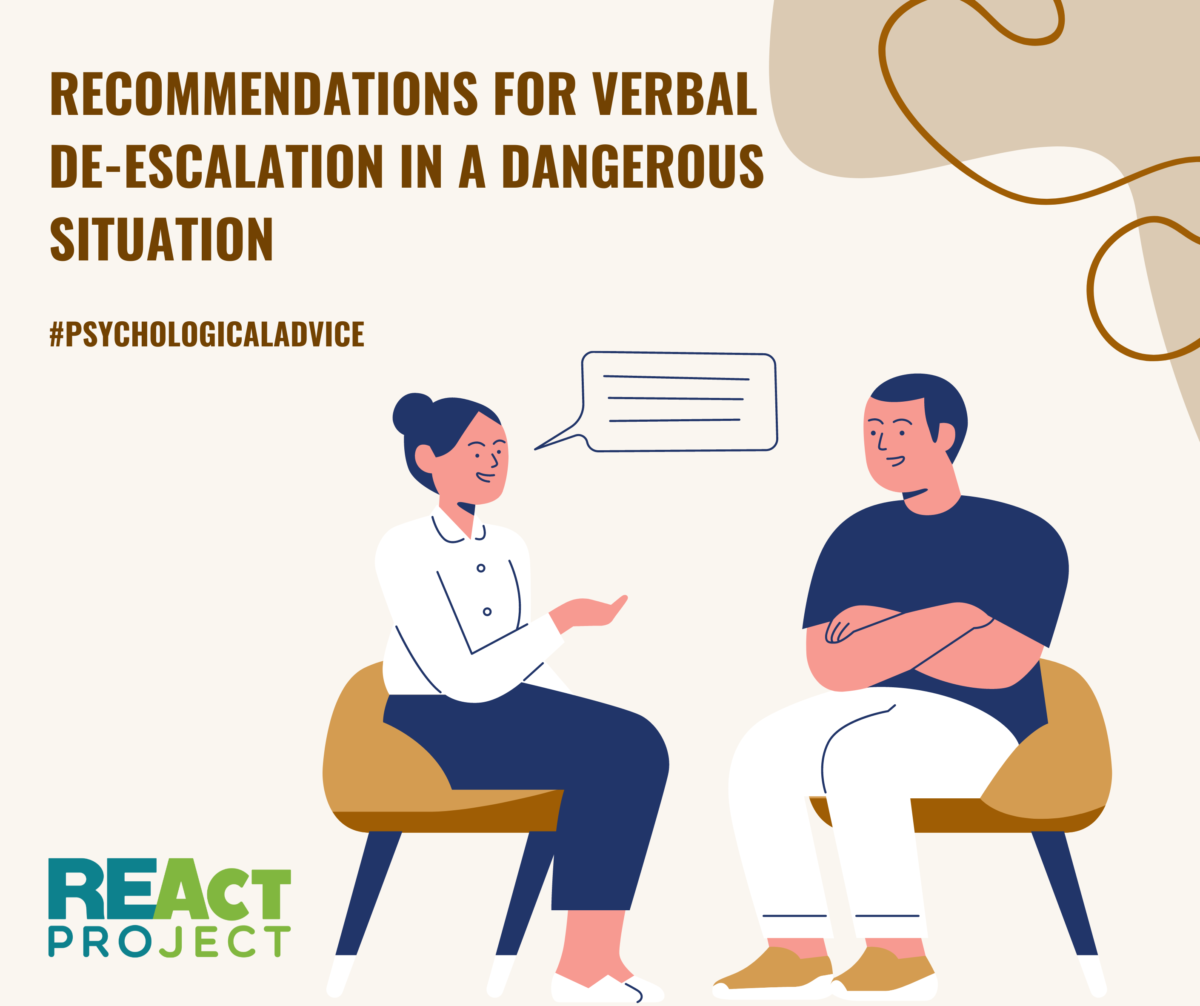Recommendations for verbal de-escalation in a dangerous situation
When a potentially verbal and/or physically dangerous situation arises, verbal de-escalation practices can be helpful.
Remember: an angry person has a reduced ability to think logically.
De-escalation techniques are not something natural and intuitive to our psyche, so sometimes we are forced to respond in a more familiar way: fight, or freeze when dealing with a threat. However, choosing the path of de-escalation, we must consciously appear focused and calm.
The technique described below must be practiced before it is needed so that it can become a competent habit.
Step 1. Prepare yourself.
- Relax your facial muscles and try to look confident. Model your voice so that it sounds low and monotone, but not emotionless.
- Don’t defend yourself! Even if the comments or insults are directed at you. Remember, they are not about you.
- Find out about any resources available to help. Know that you have a choice to walk away or call for help.
- Treat the person with respect, even when firmly setting limits or calling for help. An excited person is very sensitive to feelings of shame and disrespect.
Step 2: Never turn your back, for any reason. Always be at eye level.
- Leave extra physical space between you: about three to four times more than usual. Anger and worry fill the extra space between you and the person.
- Stand at an angle so you can move to the side if needed.
- Do not maintain “constant” eye contact or force the other person to do so. Allow me to detach or look away.
- Do not point or shake your finger.
- Don’t smile. It can look like a sneer or anxiety.
- Do not touch. Cognitive dysfunction in agitated people causes them to misinterpret physical contact as hostile or threatening.
- Keep your hands slightly away from your pockets, up and accessible to protect yourself. It also demonstrates that you have no concealed weapons.
- Do not argue and do not try to convince, give a choice, that is, the authority to make a decision on your own.
- Don’t defend yourself and don’t judge.
Step 3. A de-escalation conversation.
- Don’t be loud or try to yell back at the person who is yelling. Wait for him/her to take a breath; then speak. Speak calmly, at a medium volume.
- Remember, there is no point in reacting quickly, other than trying to calmly reduce the level of arousal.
- Don’t answer offensive questions or those that don’t have an answer. For example, “Why everyone …?”, “Why all this …?”, “When will it all end …?”. There should be no answer to these questions.
- Explain boundaries and rules in an authoritative, firm tone, but always with respect.
- Empathize with the feelings, but not the behavior.
- Where possible, try to distract the person with “thoughts and insights”. You can clarify “… help me understand what you are telling me.”
- Communicate the consequences of “atypical/inappropriate behavior” without threats or anger.
- Do not try to suppress the dignity of the interlocutor.


